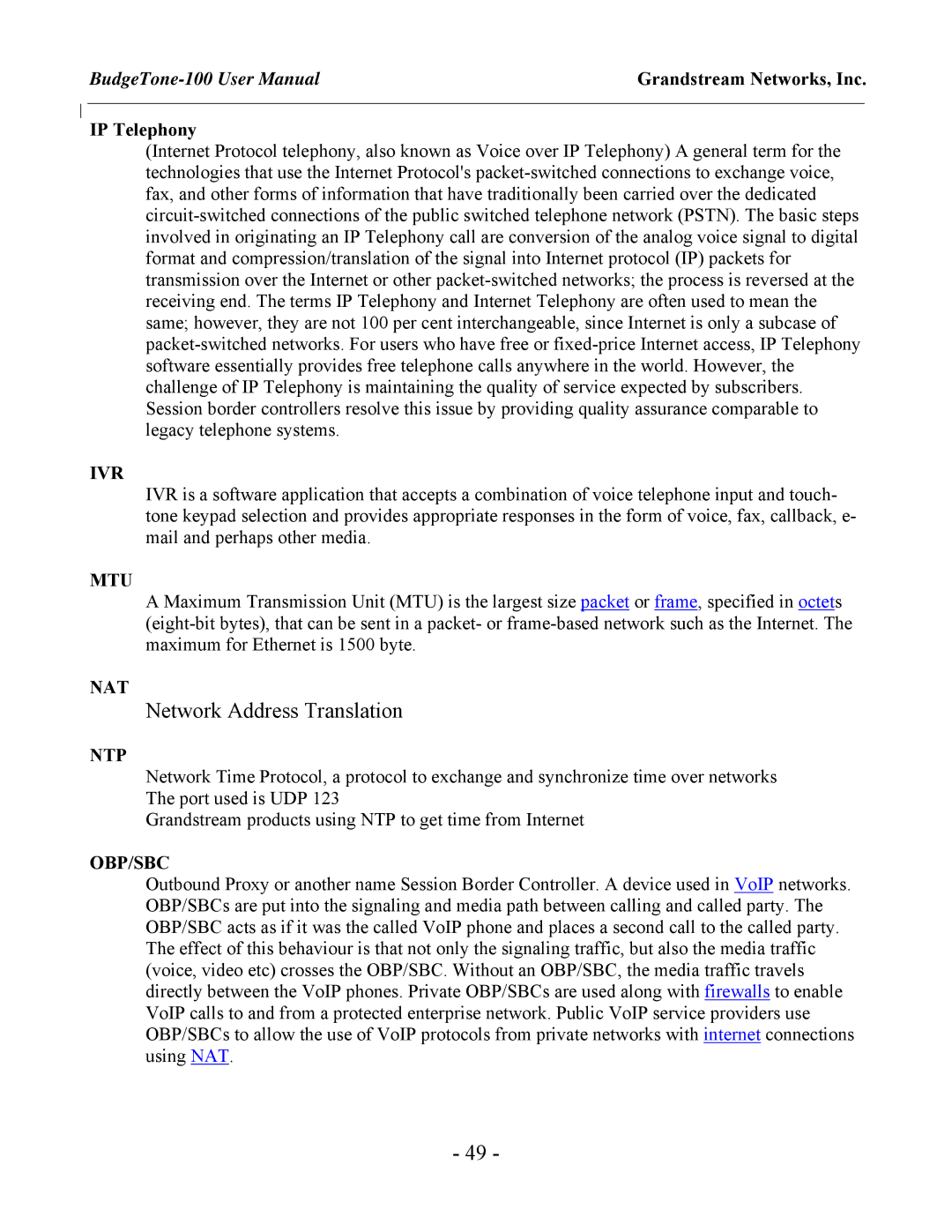IP Telephony
(Internet Protocol telephony, also known as Voice over IP Telephony) A general term for the technologies that use the Internet Protocol's
IVR
IVR is a software application that accepts a combination of voice telephone input and touch- tone keypad selection and provides appropriate responses in the form of voice, fax, callback, e- mail and perhaps other media.
MTU
A Maximum Transmission Unit (MTU) is the largest size packet or frame, specified in octets
NAT
Network Address Translation
NTP
Network Time Protocol, a protocol to exchange and synchronize time over networks The port used is UDP 123
Grandstream products using NTP to get time from Internet
OBP/SBC
Outbound Proxy or another name Session Border Controller. A device used in VoIP networks. OBP/SBCs are put into the signaling and media path between calling and called party. The OBP/SBC acts as if it was the called VoIP phone and places a second call to the called party. The effect of this behaviour is that not only the signaling traffic, but also the media traffic (voice, video etc) crosses the OBP/SBC. Without an OBP/SBC, the media traffic travels directly between the VoIP phones. Private OBP/SBCs are used along with firewalls to enable VoIP calls to and from a protected enterprise network. Public VoIP service providers use OBP/SBCs to allow the use of VoIP protocols from private networks with internet connections using NAT.
- 49 -
